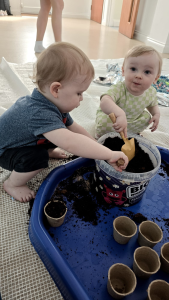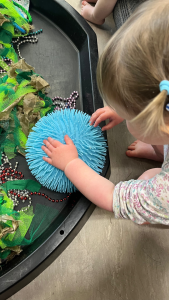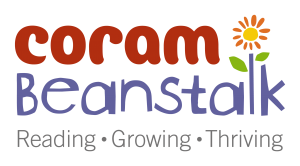How to Help Your Toddler Use Their Hands (and Why It’s a Big Deal)
Ever caught your toddler trying to thread a raisin onto a spaghetti noodle, or getting seriously frustrated trying to peel a sticker? That’s not just adorable chaos—it’s actually really important stuff going on. All those tiny, fiddly movements are part of what child development experts call fine motor skills… but if you’re anything like me, you probably typed “how to help my toddler use their hands” into Google first. Don’t worry—you’re in the right place.
Here’s everything you need to know (in plain English!) about helping your toddler build those small-but-mighty hand skills through everyday play.
Wait… What Are Fine Motor Skills?
In a nutshell, fine motor skills are the small movements we make using the muscles in our hands and fingers. For little ones, this includes things like:
-
Picking up small objects
-
Turning pages
-
Stacking blocks
-
Holding a crayon
-
Feeding themselves
-
Doing up zips or buttons
These skills lay the groundwork for loads of important things they’ll need later—like handwriting, using scissors, brushing their teeth, and even tying shoelaces.

Why Fine Motor Skills Matter
They might seem like small wins, but fine motor skills are a big deal in your child’s development. Here’s why:
-
Independence: Being able to feed themselves, get dressed, and play with toys their way builds confidence.
-
School readiness: These early hand movements directly support future skills like drawing, writing, and cutting.
-
Brain development: Fine motor activities help form connections between movement and thinking—critical for problem-solving, concentration, and learning.
In short: fiddly fingers now = flying start later.
How to Help My Toddler Use Their Hands Through Play
Here’s the good news—you don’t need flashcards, fancy toys or a Pinterest-perfect setup. Your toddler learns best through play, especially the messy, chaotic, real-life kind.
1. Let Them Feed Themselves (Even If It’s a Bit of a Horror Show)
Using fingers to pick up food, scoop with a spoon, or stab a bit of pasta with a fork helps build dexterity. It might be messy, but it’s totally worth it.
2. Sticker Play, Colouring, and Scribbling
Peeling stickers, drawing with crayons, or even banging a bingo dabber onto paper all strengthen the muscles they’ll need for writing later on.
💡 Top tip: Big chunky crayons are perfect for little hands still figuring things out.
3. Blocks, Duplo, and Stacking Games
Stacking, building, knocking down—it’s all gold. These kinds of activities teach control and coordination in a way that feels like fun, not work.
4. Threading and Posting
Got a colander and some pipe cleaners? Instant fine motor activity. Threading, posting coins into a piggy bank, or popping lids on and off containers are brilliant ways to boost coordination.
5. Sensory Play with a Purpose
Playdough, rice trays, squishy bags of gel—anything they can pinch, poke or squish builds strength in their fingers. Let them poke spaghetti into a colander, or hide beads in a tray of lentils for them to dig out.
Real Life Is the Best Playground
You don’t need a toy catalogue to boost your toddler’s skills—real life is packed with opportunities:
-
Let them help peg out the washing
-
Give them a spray bottle and sponge to “clean”
-
Let them open and close lunchboxes or containers
Even something as simple as turning the pages of a board book or picking fluff off the carpet is working those fine motor muscles.
So if you’re still wondering how to help my toddler use their hands, the answer is simpler than it seems: give them chances. Let them try. Let them struggle a bit. Let them play.
Every sticker peeled, every crayon scribble, every tower built—it’s all part of their amazing, messy, wobbly journey toward independence.









